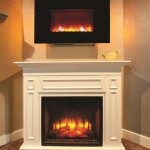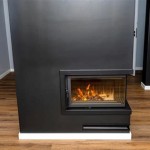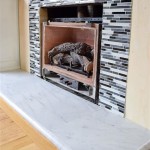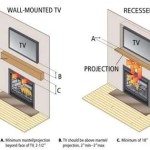Understanding Cover Options for Outside Fireplace Vents
Outside fireplace vents are critical components of a properly functioning fireplace system. They facilitate airflow, allowing for efficient combustion and the safe expulsion of smoke and harmful gases. However, these vents are also vulnerable to environmental factors, such as rain, snow, debris, and even unwanted pests. Consequently, selecting an appropriate cover for the outside fireplace vent is an important consideration for maintaining the integrity and efficiency of the fireplace.
The purpose of an outside fireplace vent cover extends beyond simply preventing rain from entering the chimney. A well-chosen cover contributes to preventing backdrafts, minimizing heat loss, and keeping animals from nesting within the flue. The market offers a variety of cover options, each with its advantages and disadvantages regarding cost, durability, and installation complexity. A thorough understanding of these options is crucial for homeowners seeking to optimize the performance and longevity of their fireplaces.
The selection process should also consider the specific type of fireplace and its venting system. Factors like the size and shape of the flue, the local climate, and the presence of overhanging trees all influence the optimal choice. Prior to purchasing a cover, it is also advisable to consult with a qualified chimney sweep or fireplace technician to ensure compatibility and compliance with local building codes.
Key Point 1: Preventing Environmental Intrusion
The primary function of an outside fireplace vent cover is to protect the chimney from environmental elements. Rain and snow can cause significant damage to the inner lining of the chimney, particularly if it's constructed from masonry. Water absorption can lead to cracking, spalling, and weakening of the structure over time. Freeze-thaw cycles exacerbate this damage, as the expansion and contraction of water within the brickwork gradually deteriorates the material. A cover effectively shields the chimney from direct exposure, mitigating these risks and extending the lifespan of the chimney.
Debris, such as leaves, twigs, and animal nests, can also accumulate within the chimney if it remains uncovered. This accumulation can obstruct airflow, leading to poor combustion and an increased risk of carbon monoxide buildup inside the home. Furthermore, a blockage can create a fire hazard if hot embers ignite the accumulated debris. A cover prevents this debris from entering the chimney, ensuring proper ventilation and reducing the risk of fire.
Animal intrusion is another significant concern. Squirrels, birds, raccoons, and other animals often seek shelter within chimneys, particularly during colder months. Their nests can block airflow and introduce parasites and allergens into the home. Removing an animal nest from a chimney can be a difficult and potentially hazardous task. A properly installed cover acts as a barrier, preventing animals from accessing the chimney and establishing nests.
The material used for the cover plays a critical role in its effectiveness against environmental intrusion. Stainless steel and copper are popular choices due to their durability and resistance to corrosion. Galvanized steel offers a more affordable alternative, but it may be more susceptible to rust over time. The design of the cover is also important. A cover with a mesh screen provides effective protection against debris and animals while still allowing for adequate airflow. The mesh size should be small enough to prevent entry by common pests but large enough to avoid restricting ventilation.
Key Point 2: Enhancing Fireplace Performance and Safety
Beyond protecting the chimney from environmental elements, a vent cover can also improve the overall performance and safety of the fireplace. A well-designed cover can help to prevent backdrafts, which occur when air flows down the chimney instead of up. Backdrafts can push smoke and harmful gases into the home, creating a health hazard. A cover with a draft-inducing design can help to stabilize airflow and prevent backdrafts, especially in windy conditions.
Furthermore, a cover can reduce heat loss through the chimney when the fireplace is not in use. An open chimney acts as a large vent, allowing warm air to escape from the home. This can increase heating costs, particularly during colder months. A cover with a tight seal minimizes this heat loss, improving energy efficiency. Some covers even incorporate insulating materials to further reduce heat transfer.
Spark arrestors are another important safety feature that can be integrated into a vent cover. These screens prevent sparks and embers from escaping the chimney, reducing the risk of wildfires, especially in areas with dry vegetation. Spark arrestors are often required by local building codes, particularly in regions prone to wildfires. The mesh size of the spark arrestor must comply with these regulations to ensure effective spark containment.
Selecting the appropriate size and type of cover is essential for optimizing fireplace performance. A cover that is too small can restrict airflow, leading to poor combustion and smoke buildup. A cover that is too large may not provide adequate protection against the elements. Consulting with a qualified chimney sweep or fireplace technician can help to determine the optimal cover size and design for a given fireplace system.
Key Point 3: Types of Outside Fireplace Vent Covers and Their Features
The market offers a diverse range of outside fireplace vent covers, each designed with specific features and materials to address various needs and preferences. Understanding the different types and their associated characteristics is crucial for making an informed decision.
Standard Chimney Caps: These are the most common type of vent cover, typically constructed from metal and featuring a mesh screen to prevent debris and animal intrusion. They are relatively inexpensive and easy to install, making them a popular choice for many homeowners. Standard chimney caps are available in various sizes and shapes to fit different flue dimensions.
Decorative Chimney Caps: These caps combine functionality with aesthetic appeal. They come in a wide array of designs, from simple to ornate, and can be customized to match the architectural style of the home. Decorative caps are often made from copper or stainless steel and may feature intricate detailing. While they offer the same protective benefits as standard caps, they are typically more expensive.
Top-Sealing Dampers: These covers incorporate a damper mechanism that seals the chimney when the fireplace is not in use. This seal prevents heat loss and minimizes drafts, improving energy efficiency. Top-sealing dampers are more expensive than standard caps but can provide significant cost savings over time by reducing heating bills. They also offer superior protection against rain and snow.
Wind-Resistant Chimney Caps: These covers are designed to withstand high winds and prevent backdrafts. They feature a specialized design that directs airflow away from the chimney opening, minimizing the impact of wind gusts. Wind-resistant caps are particularly useful in areas with frequent strong winds.
Multi-Flue Chimney Caps: These covers are designed to protect multiple flues that share a single chimney. They feature a large, shared housing with individual openings for each flue. Multi-flue caps are commonly used in homes with multiple fireplaces or appliances that vent through the same chimney.
Copper Chimney Caps: Copper chimney caps are a premium option known for their durability, resistance to corrosion, and aesthetic appeal. Copper develops a distinctive patina over time, adding character to the home. While more expensive than other materials, copper caps can last for decades with minimal maintenance.
The selection of the appropriate vent cover should also consider the warranty offered by the manufacturer. A longer warranty typically indicates a higher quality product. It is also advisable to read reviews and compare prices from different retailers before making a purchase. Professional installation is recommended to ensure proper fit and function of the cover.
Regular inspection and maintenance of the vent cover are essential for ensuring its continued effectiveness. The cover should be inspected annually for signs of damage, such as rust, cracks, or loose fasteners. Debris should be removed from the screen to maintain proper airflow. Damaged covers should be repaired or replaced promptly to prevent environmental intrusion and maintain fireplace safety.

Termination Cap Cover For Direct Vent Fireplace Draft Stopper

Termination Cap Cover For Direct Vent Fireplace Draft Stopper

Termination Cap Cover For Direct Vent Fireplace Draft Stopper

Bug Proofing A Direct Vent Fireplace Doityourself Com Community Forums

Outdoor Fireplace Vent Paint To Match Exterior

Wall E Cover Home Exterior Metal Vent Universal Dryer And Kitchen 1 627843367703 The Depot

Diy Fireplace Installation Flexible Direct Vent

Wasps And Fireplace Vent Bogleheads Org

Fireplace Wall Vent General Q A Chieftalk Forum

Majestic Courtyard 36 Inch 42 Vent Free Outdoor Natural Gas Firep Fyre Direct
Related Posts








